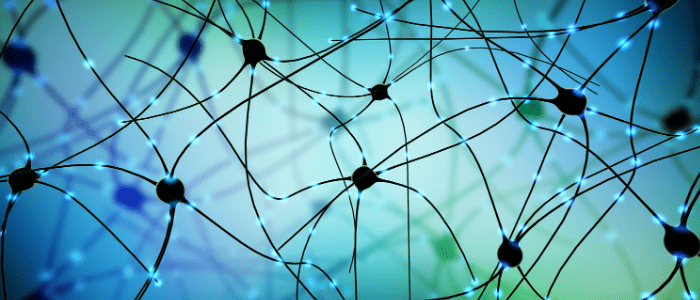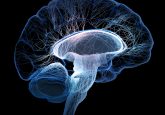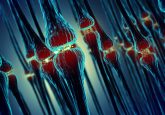Sleep’s role in memory consolidation: an interview with Jan Born

Jan Born is a researcher investigating the connection between sleep and memory formation. His main affiliation is with the University of Tubingen (Germany), where he is the chair of the Department of Medical Psychology and Behavioral Neuroscience.
In this interview, we had the pleasure of speaking with Jan about his plenary lecture at the FENS Virtual Forum of Neuroscience (11–15 July 2020) on sleep’s role in memory consolidation. Jan also explains what inspired him to start researching the topic of memory formation during sleep, in addition to what further work he has planned for this area of research.
What inspired you to start researching the topic of memory formation during sleep?
Good question – this is difficult to answer and is not so simple. When I was younger, I started to research the following question: ‘How do hormones affect brain activity’? At that time, we were also interested in seeing how hormone secretion (e.g., cortisol) is regulated by sleep and, in turn, how these secreted hormones feedback to the brain to change sleep.
We found that sleep can be divided into two parts: an early phase in which slow-wave sleep (SWS) is predominant and a late phase in which REM sleep is predominant. These two parts are also connected to different hormonal patterns. During SWS, the stress hormone activity is suppressed. During late-REM sleep, there is a strong increase in stress hormone activity. In early SWS, there is not only a suppression of cortisol and stress hormones, but simultaneously, a strong increase in growth hormone, which is a hallmark of the early SWS-rich period.
Following this, I had a student who came across work carried out from another group in the late 60s/70s that looked at memory formation across early SWS-rich sleep and late-REM sleep-rich sleep. This group found that memory formation across early SWS-rich sleep is much better and stronger than memory consolidation over the late REM sleep-rich period of the night. They believed that this was an effect of internal interference because they thought during REM sleep, the brain is dreaming, and this dreaming interferes with the consolidation of memories. At that time, we believed they were wrong. It is not the interference but instead, the hormones that are secreted at that time that may prevent or regulate memory consolidation.
We simultaneously manipulated the hormone levels by administering cortisol, for example, during early SWS-rich sleep. To make the story shorter we found that, indeed, stress hormone levels are suppressed during SWS and this allows for the memory consolidation effect. However, this is just a permissive condition and isn’t the real effect mediated by the low cortisol. For good memories to be formed during SWS, you need the stress hormone to simultaneously be downregulated. This is how I came to look at memory, which is why it wasn’t such a straightforward response.
You’re presenting a plenary lecture at the virtual FENS conference on sleep’s role in memory consolidation – can you provide us with an overview of your talk?
This goes back to what I mentioned earlier about hormones and sleep-dependent memory consolidations. This research was conducted over 20 years ago but, in my talk, I presented more recent work and what is considered state-of-the-art right now.
We know that sleep consolidates memory. Thus, whenever a human or rat learns something before the sleep period and later recall is tested, the recall is much better when the rat or human sleeps after the encoding or learning phase compared with when the rat or human remains awake for some time (e.g., 2 hours at least). This is something that has been confirmed by thousands of studies.
Initially, it was thought that this was a permissive action (i.e., sleep prevents interference). In more recent studies including our own, it has been demonstrated that this permissive effect of sleep is not sufficient to explain the many effects observed. However, one must assume that this consolidation, especially during SWS, is an active process. Therefore, the theory is that during SWS, memories are consolidated in an active systems consolidation process. At the neuronal level, a reactivation of the newly encoded information occurs, which results from the reactivation of these newly encoded neural representations. These reactivations are seen during SWS, and mainly in the hippocampus. We assume that this reactivation stimulates the transmission of the information from the hippocampus to the neocortex, with the latter acting as a long-term store.
Several aspects of this simplified theory are, in fact, validated by experiments. For example, in my talk I spoke about experiments showing that when you suppress activity of the hippocampus during SWS, you can abolish any kind of consolidating effect of sleep, even for memories that for retrieval do not depend on the hippocampus. There is also some knowledge about the mechanism of this transmission of reactivated information from the hippocampus to the neocortex. For example, it is known that the reactivation of new information in the hippocampal networks is accompanied by so-called sharp-wave ripples. These ripples nest into spindles that appear to carry the information from the hippocampus to the neocortex. Thus, it is assumed and confirmed by experiments that this coupling of ripples with spindles is a mechanism that facilities the transmission of reactivated memory information from the hippocampal initial store into the neocortical long-term store.
At the neocortical level, there is in turn a precondition of this storage process that dictates that when this reactivated memory information arrives at the neocortex, the neocortex should be in an excitable state. This is achieved by the so-called slow oscillations that the neocortex forms, which have an excitable upstate. When the neocortex goes into this upstate, the spindles with integrated memory information arrive at the neocortex and then this triple coupling – of ripples into spindles and of spindles into the slow oscillation upstate – triggers plastic processes that lead to the storage of that information in neocortical networks.
I then spoke about my final point, which is psychological and is also important. We know that hippocampal reactivation triggers an information transmission of newly encoded memory information from the hippocampus to the neocortex. This transmission of reactivated memory information induces a very gradual redistribution of the representation so that at the end of the systems consolidation process, the redistributed representation of the memory is more localized in neocortical networks and is less dependent on the hippocampus. This has been shown by many studies on long-term memory formation, but it appears to happen primarily during sleep.
At the psychological level, this redistribution of the memory towards neocortical networks goes in parallel with a qualitative change in the content of the memory. At the beginning, the memory is more episodic-like and contains a lot of contextual details. At the end of this process, when the representation is in the neocortex, the memory is more schema-like and is more generalized with less contextual details. This transformation can be shown in psychological experiments. For example, we demonstrated that infants during sleep learn to abstract from objects categories – that is, they learn where several similar objects pair with a specific word that stands for a category. This way, they can develop an understanding of categories where more generalized categories are enhanced by sleep instead of the individual objects themselves.
Similarly, other experiments have shown that infants learn about the grammar of a language and not about single sentences. However, they can abstract the rules of the grammar underlying the language during sleep.
Altogether these experiments show that it’s not just this copying process from the initial hippocampus to the neocortex, or this consolidation process, but instead it’s an active redistribution of the representation that goes along with qualitative change.
To me, the most important thing is what I said at the end of my talk, which is that it’s not really memory consolidation during sleep that happens but a filtering. That is, a redistribution towards the neocortical long-term store where the memories become filtered so that only essential things are kept in memory over the long-term.
What are some of the key challenges involved in conducting research into the role of sleep in learning and memory consolidation?
In technical terms, I believe that if you really want to gain an insight into the mechanisms then you should be able to combine a lot of basic neurobiological techniques with behavior. Behavior is as important, perhaps even more important, than the techniques applied themselves (e.g., optogenetics). A very good understanding of behavior is a precondition to gain true insights into what happens during sleep.
Looking forward, are there any developments that you are most excited to see in the field or any further work you are planning on doing?
Currently, I’m excited about our hypothesis and study in infants. I think the greatest developments in sleep and memory will be in this developmental field. What we are looking at now includes how sleep develops, and how the development of sleep during infancy is connected to the development of memory and memory systems. These are so connected that one gets the feeling that sleep without forming memory is unimaginable.
I’m particularly interested in the following question: ‘What is infantile amnesia’? It could be that infantile amnesia is a byproduct of sleep-induced memory formation. It could be that the transfer of memory during infancy is extremely fast between the hippocampus and neocortex, and this is perhaps due to the immaturity of the hippocampus. However, this fast transmission of memory information to the neocortex during infant sleep could be connected to a much faster forgetting of the original hippocampal memory traces.
Disclaimer
The opinions expressed in this interview are those of the interviewee and do not necessarily reflect the views of Neuro Central or Future Science Group.
You might also like:




